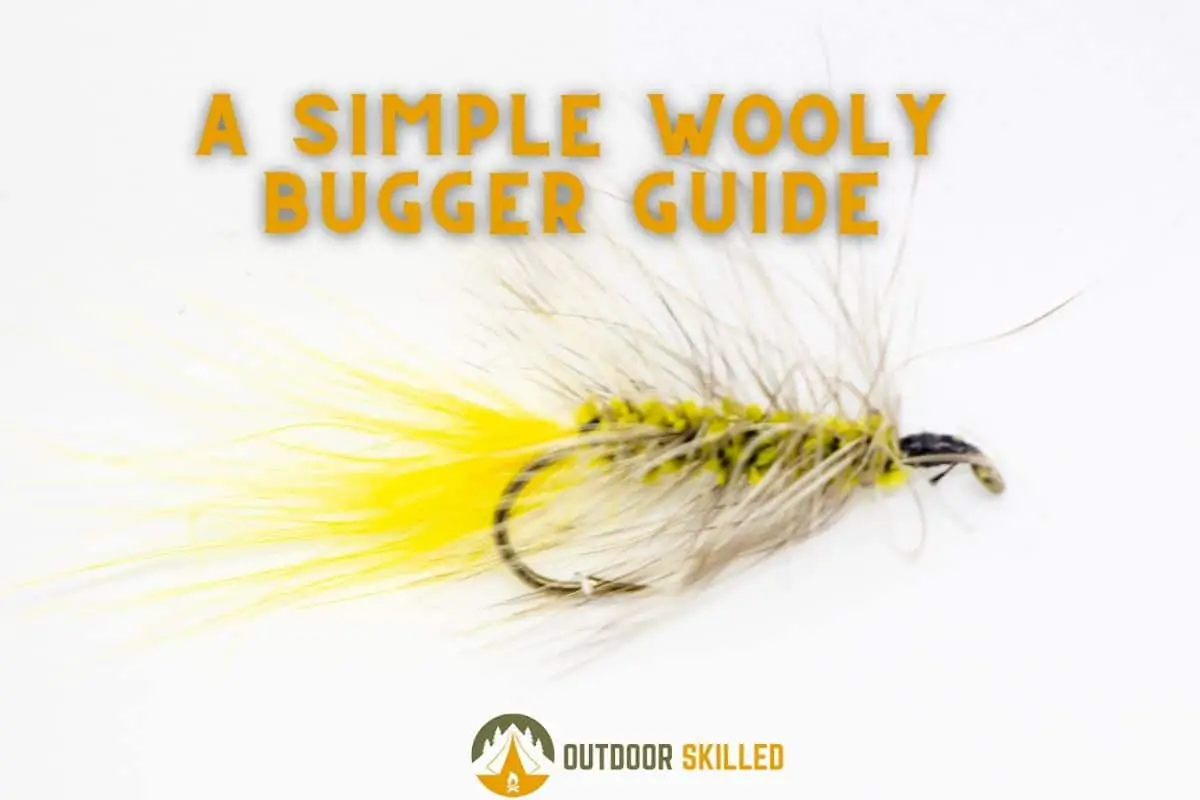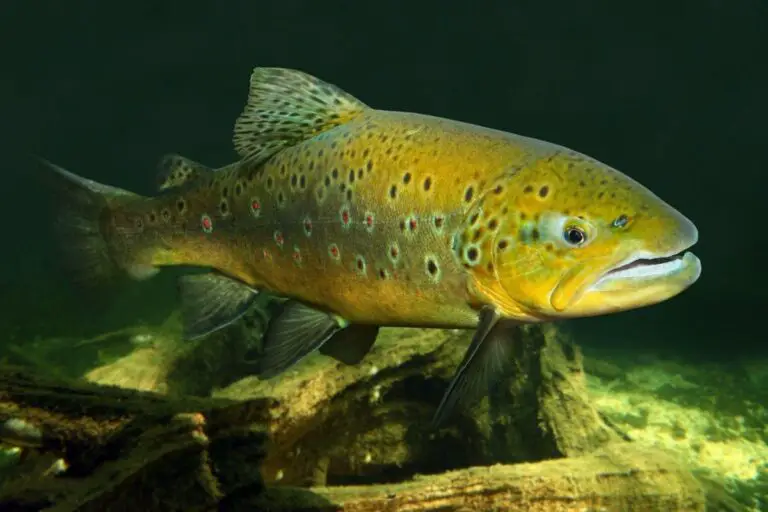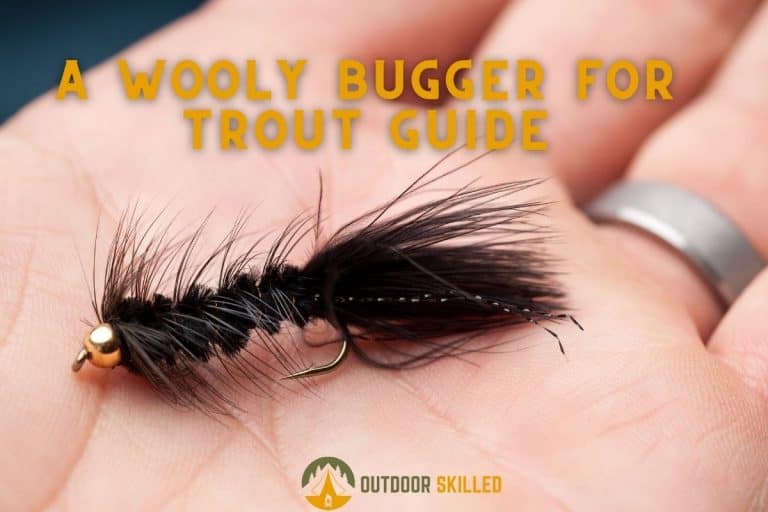Do Wooly Buggers Sink or Float? A Quick and Easy Guide
Wooly Bugger flies are the go-to fly for fly anglers. They can be fished in a variety of sizes to get both small and large fish on the hook. Their materials allow them to provide unique motion from the marabou, which often causes a strike from predatory fish. It’s ideal for beginners due to how easy to use it is.
Do wooly buggers sink or float? Wooly buggers float on the surface until you soak them in water then, it starts to sink. Its materials allow it to stay on the surface until you dip it in water and squeeze it till the water gets to all of its parts.
Read on to learn the key facts about the most popular type of fly and what fish you can catch using it.
Table of Contents
What Is a Wooly Bugger?

Wooly bugger is considered a streamer that imitates baitfish, minnow, crayfish, leeches, and other forage items for fish. The infinite patterns of colors and forms, as well as the realistic motion in the water, contribute to this portrayal.
Because of the variety, the angler can adapt it to resemble any fish they choose, making it useful in any scenario. It can be used in streams, ponds, lakes, and salt flats.
The size range is also a bonus, as it helps you to make a personalized wooly bugger that exactly suits the fish forage. Smaller fish prefer smaller wooly buggers, while larger fish prefer larger wooly buggers.
Another benefit of using a wooly bugger is that you can cast it on the water’s surface or down into the water, depending on the depth at which your target fish is roaming. This makes it ideal for multiple seasons and periods of the day, as fish tend to alter their depth in response to temperature and light conditions.
Do Wooly Buggers Sink or Float?
Wooly buggers float on the surface until they are immersed in water, at which point they begin to sink. Its materials allow it to float on the surface until you dip it in water and squeeze it until all of its sections are wet enough to sink.
Using a floating wooly bugger is as effective as using sinking ones in catching fish. Floating buggers can catch fish that are on the surface and prefer to look up while hunting. Sinking buggers, on the other hand, do best in deeper water where larger fish feed.
What Fish Can You Catch With A Wooly Bugger?

You can catch lots of different fish with a wooly bugger, such as trout, bass, salmon, steelhead, carp, Giant Trevally, bonefish, triggerfish, tarpon, and panfish. Wooly buggers are also effective for almost any fish in the right size and color.
The reason why most people prefer wooly buggers in fly fishing is that they can fit almost any fish’s forage. It can be useful in hooking several fish in various seasons and times of the day with infinite colors and combinations.
The following are the most popular fish that can be caught with a wooly bugger:
Trout
Using big heavy wooly buggers can be effective in hooking large trout, staying in the deeper section of the water column to feed or seek shade. You have to make sure you have those buggers that match watercolor when you are fishing in a river with deep pools or parts. If you fish with buggers in a lake, spend much of your time by the structure for better results.
You can check out my guide on fishing Trout with wooly bugger here. You can also check my recommendation for the best lures for trout here.
Bass
Wooly buggers are extremely effective in bass fishing. The explanation for this is that bass is used to heavy hard baits or soft plastic bait, which arouses their interest in attacking these flies. Don’t be afraid to spend your time fishing for bass in the normal spots; you’ll have a lot of luck using buggers.
You can check my recommendation for the best lures for bass here.
Pike
Sometimes it can be hard to believe that a predator fish like a pike would go for something like wooly buggers. Use a bright-colored wooly bugger, and just as you get an impressive strike of pike, you’ll see how true it is.
Pike are visual predators that will chase any object that is visually attractive enough for them. You can learn more about what lure colors are best for pike here. You can also check my recommendations for the best pike lures here.
Steelhead
Steelhead may be captured using a bugger, a bead-head that looks like an egg. It refers to their foraging, as they love eating eggs.
If you are going to use wooly buggers for any of these fish, I also recommend checking out my recommended fly fishing lines here as well. I’m only recommending what I use myself, and I think you will find these recommendations of great value and help as well.
What Does A Wooly Bugger Imitate?
A Wooly Bugger imitates a variety of fish depending on the material used and how it is fished. It is thought to mimic huge nymphs, baitfish, leeches, drowning terrestrial insects, clamworms, crayfish, shrimp, or crabs that can appeal to a wide variety of fish.
What’s impressive about wooly buggers is how you customize them to almost any fish with any color. It can imitate Hellgrammite, Sculpins, Dubsonflies, Damsel Flies, Leeches, Stonefly, and Crawfish. These are all subsurface bugs that fish feed on the majority of the time. As a result, this pattern generates a lot of fish, and large ones at that.
Some of the wooly buggers variations are Bead-Eyed Bugger, Brown Beadhead, Gierach style: Daiichi 1870 hook, Purple and Black Beadhead, Olive Dumbbell, Eyed, Olive and White Dumbbell Eyed, Black and Brown Beadhead, Olive Rubber Tailed Conehead. How you choose what works best for you from these patterns or create your own is determined by the forage of your target fish.
Related Questions
What Kind of Flies Do You Use For Trout?
Using Mayflies is one of the most effective choices in the fly fishing world. They vary in size and color and are a staple in the trout’s diet. Other flies, like caddis, are built of small pebbles or twigs, a variety of small mayfly nymphs, and a few larger stonefly nymphs.
What Are the Best Flies for Brown Trout?
These are the best flies for brown trout: Rabbit Strip Streamer, White, Black, Olive, and Blue wooly buggers, Skunk with rubber legs, Pheasant Tail Nymph, Green Caddis, Bead Head Hares Ear Nymph, small San Juan Worm, and Black Stonefly.
How Small Is Too Small For a Wooly Bugger?
No wooly bugger is too small for a wooly bugger. Wooly buggers operate for any fish in any water, even those you aren’t specifically targeting. Even the smallest buggers can work for some fish imitating their prey.
Do You Have To Use an Indicator When Fly Fishing With Wooly Bugger?
You do not have to use an indicator when fly fishing with a wooly bugger. However, it can make your job much easier, and catching fish with a strike indicator takes less skill than without. This decision can also be made in consideration of the size and weight of the fly.
Level Up your Trout Fishing
- Gear up with the best Trout Fishing Rods here
- Check out the best Trout Fishing Reels here
- Find the best fishing lines for Trout here
- Get larger trouts faster with these trout baits that NEVER fail
- Learn about hook sizing for trout here, and the best baits for rainbow trout here.
- You can’t go wrong with these powerbaits for trout.
- Get larger steelheads with these baits
- These Steelhead Lures are the experts’ picks for the year, and it’s easy to see why
Helpful Resources
How to Fish a Wooly Bugger Pattern
The Beginner’s Guide to Fly Fishing
If you like this article, please share it or pin it, you can find the share buttons below. We will really appreciate it ❤️






![What Does Rainbow Trout Taste Like? [Tips From A Pro Chef]](https://outdoorskilled.com/wp-content/uploads/2021/11/oven-baked-rainbow-trout-768x512.jpeg)

